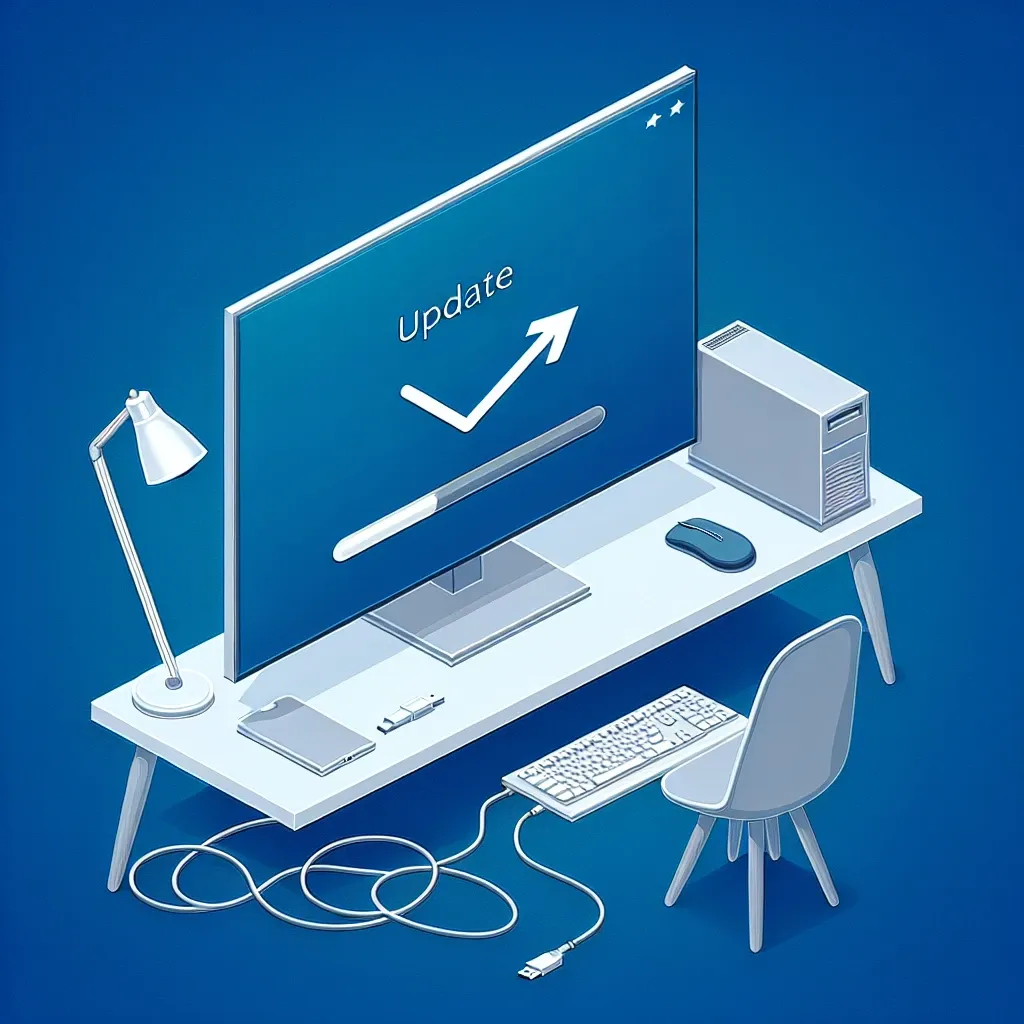Updating the firmware on your OLED monitor is essential to maintain optimal performance, unlock new features, and ensure compatibility with the latest devices and software. This article will guide you through the step-by-step process to update your OLED monitor firmware efficiently and safely.
Here’s a quick overview of what we’ll cover:
- Understanding Firmware and Its Importance
- Preparing for the Firmware Update
- Executing the Firmware Update
- Troubleshooting Common Firmware Update Issues
- Post-update Tips and Recommendations
Understanding Firmware and Its Importance
What is Firmware?
Firmware is a type of software that provides low-level control for a device’s specific hardware. It is stored on the device’s read-only memory and acts as the intermediary between the device’s hardware and the higher-level software.
Importance of Firmware Updates
Firmware updates are crucial because they:
- Enhance performance by optimizing hardware functionality
- Resolve bugs and glitches present in previous versions
- Introduce new features and functionalities
- Ensure compatibility with new hardware and software
- Improve security by addressing vulnerabilities
Preparing for the Firmware Update
1. Check the Current Firmware Version
Before you begin, it’s essential to know the current firmware version of your OLED monitor. You can usually find this information in the monitor’s settings menu or by referring to the user manual.
2. Visit the Manufacturer’s Website
Go to the official website of your OLED monitor’s manufacturer. Navigate to the Support or Downloads section and locate the firmware updates. Ensure you select the correct model of your monitor.
3. Download the Firmware Update
Download the latest firmware file available for your monitor. Ensure the file is stored in a readily accessible location on your computer.
4. Read the Release Notes
Release notes provide valuable information about what’s included in the firmware update. They may also contain specific instructions or cautions that you need to follow.
Executing the Firmware Update
1. Connect Your Monitor to the Computer
Use the appropriate cable (usually USB or HDMI) to connect your OLED monitor to your computer. Ensure the connection is secure.
2. Transfer the Firmware File
Follow the manufacturer’s instructions to transfer the firmware file to your monitor. This may involve running an executable file on your computer or copying the firmware file to a USB drive and inserting it into the monitor.
Table: Firmware Update Methods and Requirements
| Method | Requirements | Steps |
|---|---|---|
| Direct USB Update | USB Drive, Firmware File | Copy file to USB, Insert USB into monitor, Follow on-screen prompts |
| Software-based Update | Computer, Firmware File, Connection Cable | Download update software from manufacturer’s site, Connect monitor to computer, Run software |
3. Initiate the Update Process
Begin the update process as per the instructions provided by the manufacturer. This typically involves selecting the firmware update option from the monitor’s menu or running a program on your computer.
Warning: Do not turn off your monitor or unplug it during the update process, as this could cause irreparable damage.
4. Wait for the Update to Complete
Firmware updates can take several minutes. Be patient and allow the process to complete fully. Your monitor may restart multiple times during the update.
Troubleshooting Common Firmware Update Issues
1. Monitor Not Recognizing Firmware File
If your monitor does not recognize the firmware file, ensure that:
- The file is not corrupted (re-download it if necessary)
- The file is compatible with your monitor model
- The USB drive or cable is functioning correctly
2. Update Process Stuck or Interrupted
If the update process is stuck or interrupted:
- Wait for a few more minutes before taking any action
- Restart the process if there’s no progress after 10 minutes
- Contact the manufacturer’s support for assistance
3. Post-update Issues
If you encounter issues after the update, such as display errors or functionality problems, try the following:
- Reset the monitor to factory settings
- Reinstall the firmware update
- Check for any additional patches or updates
Post-update Tips and Recommendations
1. Verify the Update
Check the firmware version in the monitor’s settings to ensure the update was successful.
2. Recalibrate the Monitor
After a firmware update, it’s a good idea to recalibrate your monitor to ensure the best display quality.
3. Stay Informed
Regularly check the manufacturer’s website for future updates and read through the release notes to stay informed about new features and improvements.
Updating the firmware on your OLED monitor is a straightforward process that can substantially enhance your device’s performance and capabilities. Follow these steps carefully to ensure a smooth and successful update.

